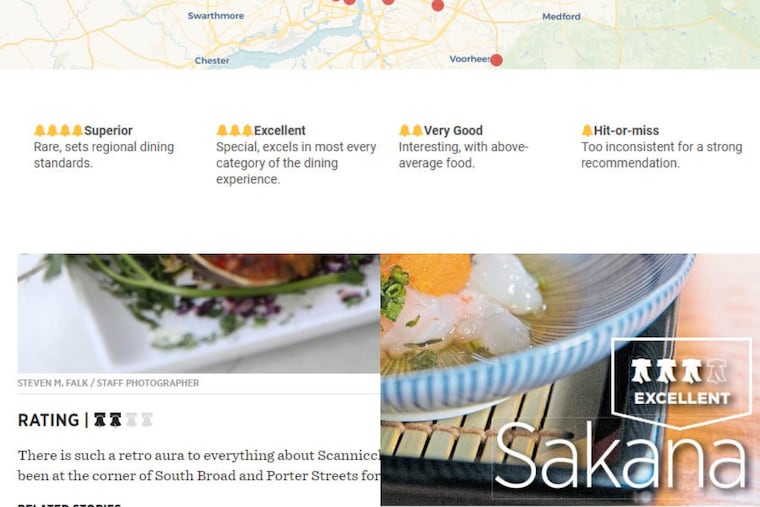Why I’ll keep giving ratings to restaurants | Craig LaBan
In an industry that has continuously struggled to remain relevant, I’ve always viewed usefulness as one of the local newspaper’s highest callings.

Reader: I split time between Philadelphia and Miami and noticed a note in a recent review that the Miami Herald no longer gives stars to restaurants. What’s your take?
Craig: The Herald isn’t the only newspaper that recently dropped ratings from its restaurant reviews. The San Francisco Chronicle’s fantastic new critic, Soleil Ho, announced this year that she would not be giving stars to restaurants, either. And the core arguments are consistent: that restaurants offer subjective and nuanced experiences that cannot be boiled down to a simple grade, and that there is too much diversity in restaurants today — both in the style of the places themselves and how diverse audiences perceive them — for fine-dining palaces, humble mom-and-pop spots, and quick-serve street-food concepts with divergent goals to be ranked along the same objective spectrum. Also … journalists want you to read their reviews!
“I’m tired of restaurants and readers obsessing over stars,” Herald food editor Carlos Frías tweeted.
I get it. Those are legitimate points, and I’ve argued both sides over the years. This discussion isn’t new. The Inquirer, in fact, was one of the last holdouts in the newspaper industry that didn’t rate restaurants when I arrived 21 years ago. We joined the prevailing wave of practice when I created the Liberty Bell system with an acknowledgment that readers like ratings because they can help give broader context and offer an easy point of entry into a review with a bottom-line judgment that many find useful in the face of so many choices.
That “service journalism” approach might not always appeal to some writers’ more artistic and intellectual impulses. I want you to read my full reviews, too! I work hard on every one of those 1,500 words. But in an industry that has continuously struggled to remain relevant, I’ve always viewed usefulness as one of the local newspaper’s highest callings. I’m here to help you spend your Philadelphia dining dollars wisely, as well as to provide a window into many facets of life in our ever-changing, dynamic city. So, if a rating sparks your interest to go deeper, read the details, and maybe make a reservation at a favorite new place, I’m all for it.
There’s no such thing as a perfect rating system. But I had the luxury of creating a system from scratch, and I deliberately avoided stars. I chose an icon that would grow its own Philly meaning over time as local restaurants populated its ranks, from the handful of top-rated four-bell trendsetters at its pinnacle down to the “poor” No Bells basement. It has remained deliberately uninflated, so a rating of two bells (“very good”) and above remains a genuine green-light recommendation. I’ve also done my best to instill values in my rating system that reflect my own — a hunger to embrace the city’s diverse riches and a determination to measure restaurants against their own ambitions as much as they are framed by the context of a wider scene. This means a casual taqueria making one extraordinary traditional dish can rise as high as the trendiest upscale Center City kitchen.
As a result, the bell ratings reflect more the impact of a restaurant’s individual experience on me rather than a ranking against the competition. It’s a subjective art, and definitely not a science. There are no formulas or algorithms.
There’s nothing stopping a critic from also writing that thoughtful, nuanced review. And I still see ratings as a complement to those full texts, not a replacement — even if some people won’t see past the bells. But at some point, a critic should come to respect readers enough to know many are fully willing and able to discern the “apples from oranges” differences that define restaurants as unique from week to week. It’s the journalist’s job to help them get to that point clearly through effective and nuanced writing, whether there is a rating or not.